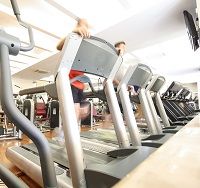Article
Multiple Sclerosis: Do Treadmill Walking Exercise Intensity and Thermosensitivity Matter?
Author(s):
Managing the cognitive impairment in patients suffering from multiple sclerosis (MS), has long been an integral focus of MS research.

Managing the cognitive impairment in patients suffering from multiple sclerosis (MS), has long been an integral focus of MS research.
Experts had found exercise training to be a possible approach to controlling cognitive decline, and concluded — through preliminary evidence – treadmill walking (TMW) could be the most beneficial method for improving “inhibitory control” (IC) in “fully ambulatory” people afflicted with MS.
Brian M. Sandroff, PhD, Kessler Foundation, at the Americas Committee for Treatment and Research in Multiple Sclerosis (ACTRIMS) 2016 Forum, shared results from two studies exploring the different intensity levels of TMW exercise.
Sandroff and colleagues hoped to also understand whether increases in core body temperature (CB temp) negate the potentially beneficial effects of TMW exercise on IC to discern the optimal exercise stimulus for improving cognition in MS.
Study 1 compared the acute effects of light, moderate, and vigorous TMW intensity exercise on IC in 24 patients with MS.
Participants were required to complete four experimental conditions: 20 minutes of light, moderate, and vigorous intensity TMW exercise, and quiet rest in a randomized and counterbalanced order — IC was measured before and after each condition.
The second study assessed the cute effects of (CB temp) on IC during rigorous TMW exercise in 14 thermosensitive patients with MS.
Thermosensitive patients to complete two experimental conditions: 20 minutes of vigorous TMW exercise and 20 minutes of quiet rest. This study saw CB temp measurements through both conditions along with IC measurements before and after each condition.
Results from the first study indicated significant improvements in IC compared with quiet rest for all three TMW exercise levels of intensity. Whereas study 2 showed even though CB temp had raised levels following vigorous exercise, there were still significant improvements in IC for vigorous exercise than with quiet rest.
What does this mean?
According to Sandroff, light, moderate, and vigorous intensity TMW could be “ exercise stimuli” that particularly help IC.
“CB temp might not nullify the potentially beneficial effects of TMW exercise on IC. This represents the next step in delineating the optimal exercise stimuli for improving cognition in fully-ambulatory persons with MS, and supports the feasibility of chronic TMW exercise training for improving IC in thermosensitive persons with MS,” concluded Sandroff.





